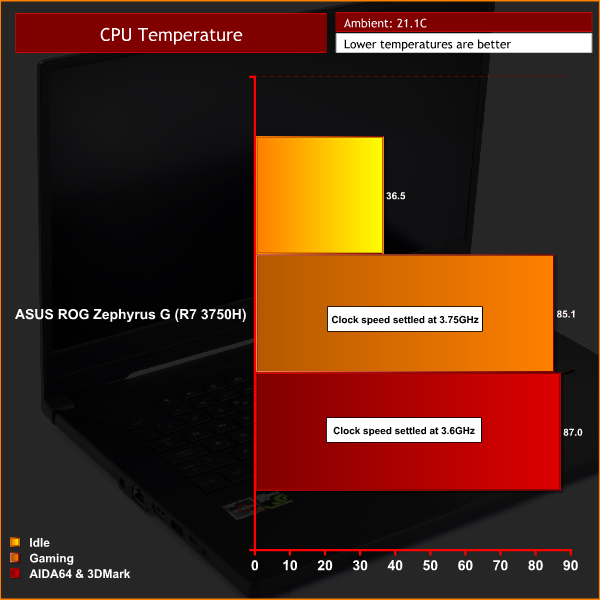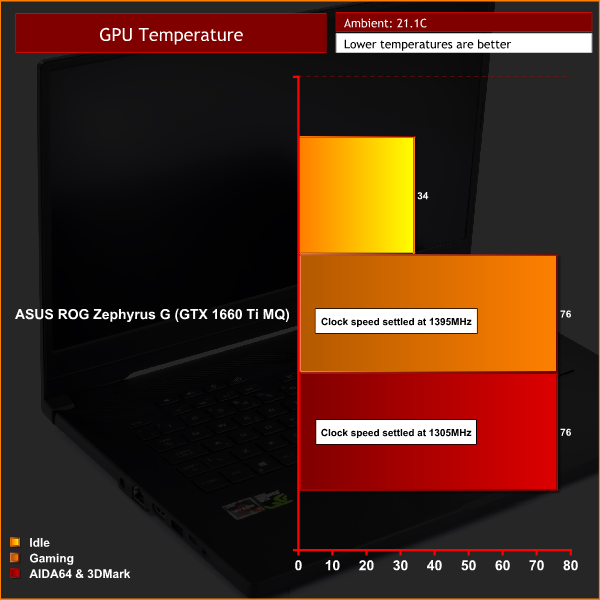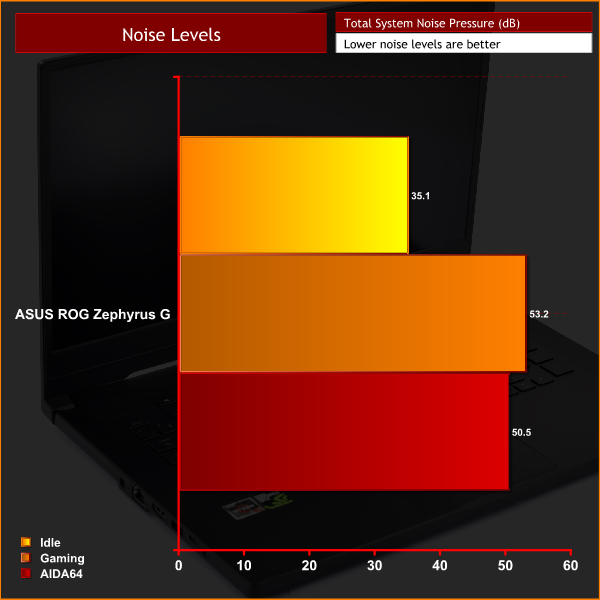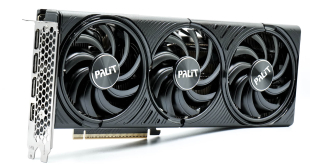Thermals
Idle readings come from leaving the system on the Windows desktop for 10 minutes. Our ‘Gaming' reading comes from playing Shadow of the Tomb Raider for 10 minutes, while our ‘AIDA64 & 3DMark' reading comes from loading the CPU in AIDA64, with Fire Strike simultaneously running in the background for 10 minutes.
Starting with CPU performance, the 3750H does run quite warm in the Zephyrus G. That said, 87C was the absolute hottest temperature we saw when stressing the CPU in AIDA64, while simultaneously loading the GPU with looped runs of 3DMark Fire Strike. Even in that worst-case scenario – with CPU and GPU load at 100% – the 3750H maintained 3.6GHz across all four cores, which is nowhere close to thermal throttling. Things are even better when gaming, as we saw CPU clock speeds settle at the 3.75GHz mark when playing Shadow of the Tomb Raider.
GPU temperatures are even better, with the 1660 Ti Max-Q peaking at 76C whether we were gaming or running our AIDA64/3DMark stress test. We did notice the core clock stayed higher when just gaming, however, with frequencies at and around the 1400MHz mark when in Shadow of the Tomb Raider.
I also noticed that, depending on the title, GPU clock speed would go as high as 1600MHz. That was the typical frequency I saw when playing Doom (2016), for instance, meaning the GPU ran about 200MHz faster than when playing from Shadow of the Tomb Raider. I put this down to CPU utilisation – we were seeing much higher CPU utilisation in Shadow of the Tomb Raider (typically between 60-80% in the Peruvian Jungle section), while Doom utilised the CPU much less (typically around 40%).
This makes sense, as less stress on the CPU (and the shared cooling system between the two components) allows for the GPU to benefit, with clock speeds running higher.
Noise
Noise results are recorded using ASUS’ ‘Balanced’ Armoury Crate mode which provides a balance between CPU performance, thermals, and fan speed. We position the decibel meter 1 foot from the top edge of the display.
There's no getting around the fact that the Zephyrus G is a loud machine. We noticed a 3dB variation between our gaming and AIDA64/3DMark tests, but either way – it's a very noticeable fan noise. When idling it's almost inaudible, but as soon as you open a game the fans ramp up quickly. Unlike the Strix Scar III, however, I found the fan speed to be pretty consistent – it didn't oscillate once the system came under load – but you'll definitely want to wear a headset when gaming with this machine.
 KitGuru KitGuru.net – Tech News | Hardware News | Hardware Reviews | IOS | Mobile | Gaming | Graphics Cards
KitGuru KitGuru.net – Tech News | Hardware News | Hardware Reviews | IOS | Mobile | Gaming | Graphics Cards





